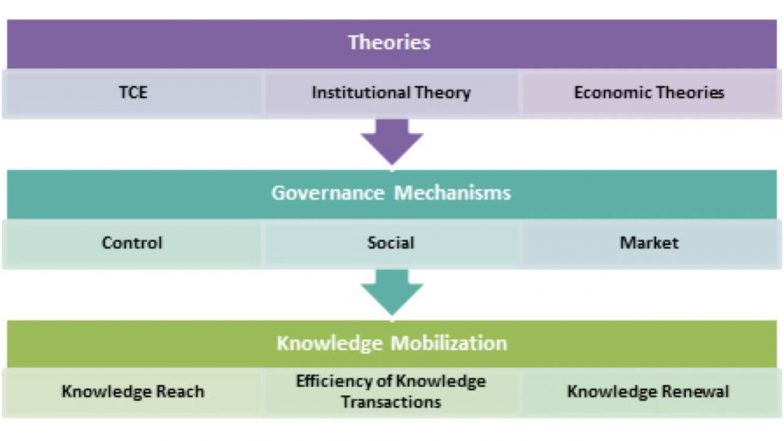Summary
Designing governance for advancing knowledge requires moving beyond traditional hierarchical and centralized models to embrace collaborative, transparent, and adaptive approaches. New models are necessary to manage increasingly complex, interdisciplinary research, open science mandates, and the rising importance of data and knowledge commons.
Source: Gemini AI Overview
Key principles
- Balance of human and computational knowledge: A framework should manage the interplay between human intuition and creativity and machine-driven analysis.
- Radical openness: Open governance models built on digital technologies can democratize knowledge production by lowering the transaction costs of collaboration.
- Equitable access: Systems must validate the legitimacy of diverse knowledge systems, including Indigenous and scientific approaches, to ensure social justice and democracy.
- Empowerment: The focus should shift from restricting power to a few knowledge holders toward empowering individuals and diverse groups to contribute.
- Iterative design: Governance procedures and policies should be consistently revisited and adjusted to align with an organization’s changing strengths, weaknesses, and goals.
Models
The Collaborative Knowledge Network
This model moves away from rigid hierarchical structures toward a flexible, collaborative community of practice (CoP). It is particularly effective for organizations that are project-based or rely on cross-departmental collaboration.
Design principles:
- Dynamic structures: Create fluid, project-specific working groups rather than relying on rigid, centralized reporting structures.
- Incentive systems: Establish reward systems that are not only monetary but also foster reciprocity, communication, and a shared culture of collaboration to encourage active participation.
- Formal and informal channels: Use formal mechanisms like network boards and explicit rules, as well as informal social mechanisms like mentoring and cultural norms, to facilitate knowledge exchange.
The Internal Knowledge Market
This model uses market-based mechanisms within an organization to stimulate knowledge creation, pricing, and sharing. It treats knowledge as a tradable asset, using internal incentives to drive its mobilization.
Design principles:
- Incentivized contributions: Reward individuals for contributing their knowledge to a central repository or knowledge marketplace.
- Demand-driven creation: Allow internal business units to “buy” the knowledge they need, creating a clear demand signal for what information is most valuable.
- Comparative analysis: Compare the effectiveness of market-based governance against traditional methods like CoPs to measure impact and drive continuous improvement.
The Co-governance Framework
This model, particularly relevant for public and civic issues, establishes special roles for member-led community and labor organizations. It ensures that the perspectives of those affected by policy are included in the decision-making and enforcement process.
Design principles:
- Publicly mandated networks: Design networks where public and civic actors are brought together by mandate to solve specific public problems.
- Shared decision-making: Involve citizens and member-led organizations in agenda-setting, decision-making, and monitoring, rather than just using them for data input.
- Legitimacy and trust: Bridge diverse knowledge systems, including indigenous and local perspectives, to build legitimacy and strengthen governance.
The Algorithmic Governance Framework
As artificial intelligence increasingly influences knowledge expansion, this model uses AI to govern and manage complex knowledge systems. It offers a path to managing complexity that may overwhelm human bureaucracies.
Design principles:
- Define vetting processes: Clearly outline processes for vetting and assuring the quality, integrity, and veracity of knowledge, especially AI-generated or AI-managed knowledge.
- Increase traceability and transparency: Implement measures to trace the origins of knowledge within the system, addressing the “black box” problem of opaque AI systems.
- Measure complexity: Use computational methods to measure and reduce the complexity of AI-driven knowledge systems, minimizing risks associated with errors.
Key steps for implementing
- Form a Governance Board: Assemble a diverse board with clear roles and decision-making authority. Include members with a mix of strategic, analytical, and cultural competencies.
- Define Core Values: Establish a clear purpose and a set of core values, emphasizing accessibility and transparency. Explicitly state what the organization will and will not do.
- Establish Vetting and Assurance: Implement robust processes for ensuring the quality and integrity of knowledge. Ask critical questions like, “Is any critical knowledge under the control of only one person?”.
- Connect to Organizational Performance: Define clear Key Performance Indicators (KPIs) to measure the effectiveness of the new governance structure. Continuously track progress and make adjustments.
- Develop a Socialization Strategy: Use strong leadership backing and communication to reinforce new behaviors and integrate the new governance model into the organizational culture.

